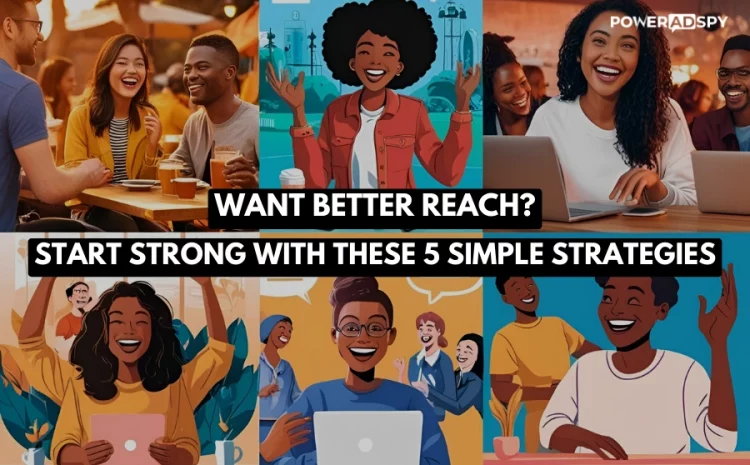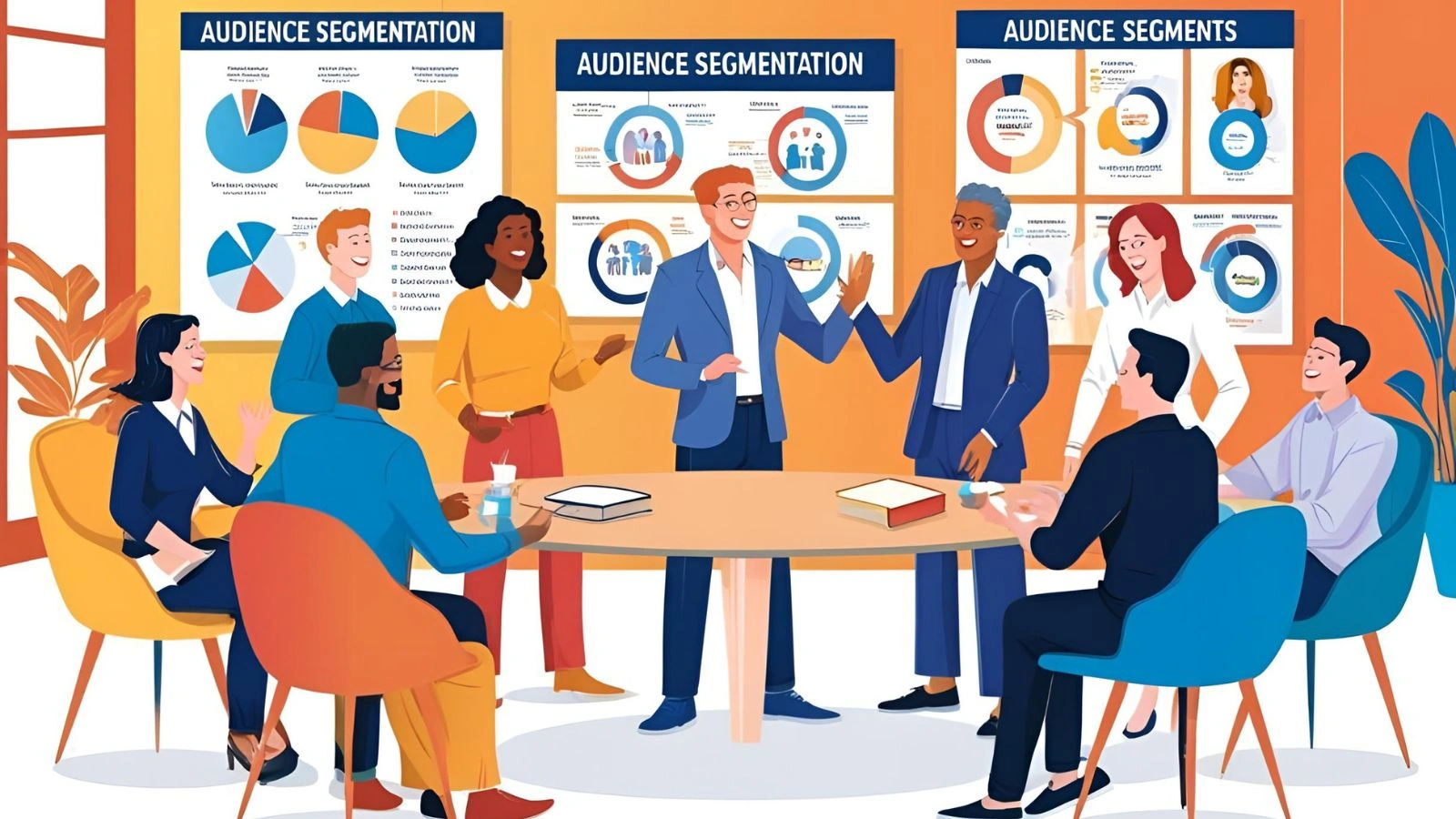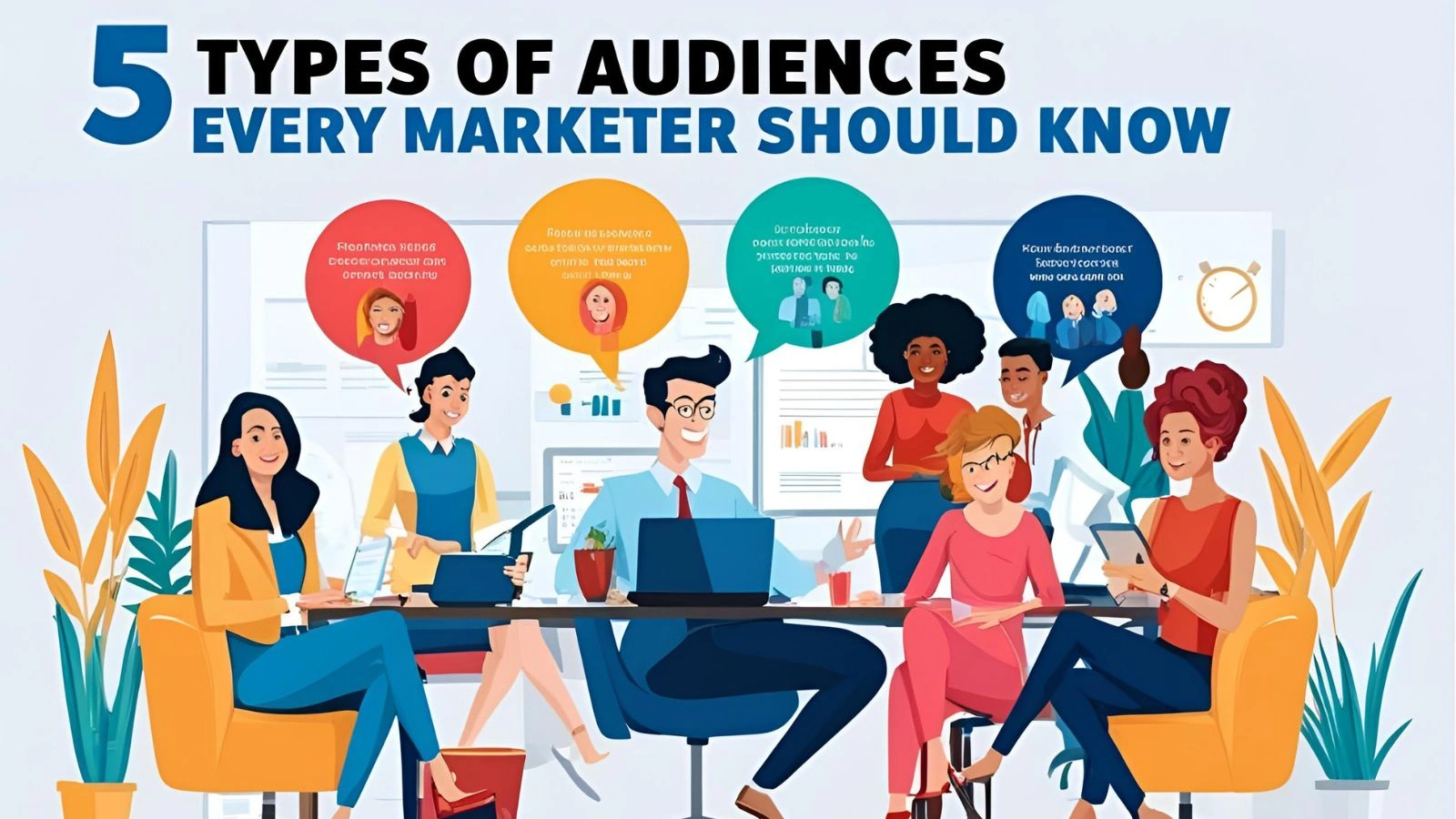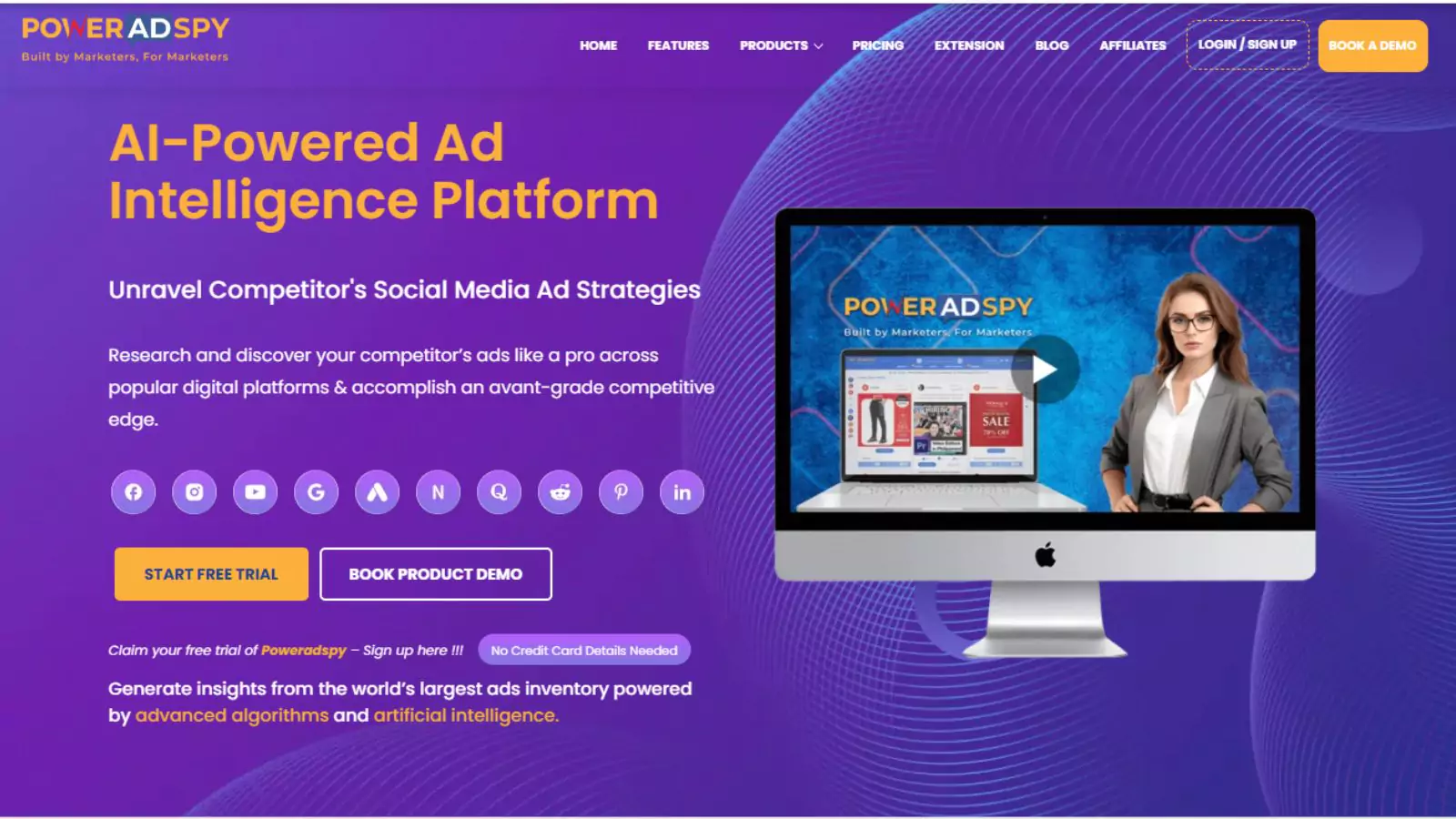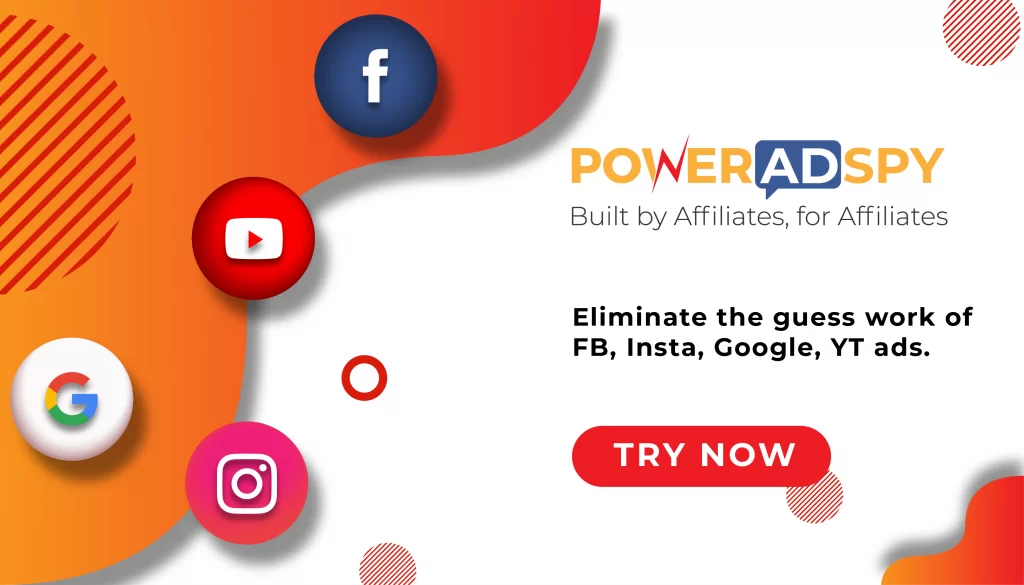How To Identify & Target The Right Types Of Audiences In 2025
Here’s a hard truth: You can have the best content, the most brilliant design, and a flawless product, but if it’s not reaching the right types of audiences, none of it will stick.
That’s where target audience categories come in.
Most marketers think they know their audience. But assumptions don’t drive conversions; real insights do. When you define and segment the different types of audiences strategically, you stop wasting resources on broad messaging and start crafting communication that feels tailored, timely, and relevant.And that’s what moves the needle. To do that, you must identify the right types of audiences who will truly benefit from your product or message.
In this guide, we will break down the six essential types of audiences you need to understand and how to target each one effectively. These are not just theoretical categories; they are practical profiles you can use to point your campaigns, personalize your messaging, and drive better results across every channel.
By the end, you will have a solid understanding of how to apply your strategy to the true nature of your audience, not who you assume they are.
Let’s begin by grasping why audience targeting is not merely significant, but central to all that you are going to do in contemporary marketing.
Short on time? Listen to this blog instead!
Why Audience Targeting Matters More Than Ever?
People are flooded with ads, content, and emails all day long. If your messaging does not speak directly to them, it gets ignored, no matter how clever or well-designed it is.
That is why audience targeting options is not just a “nice to have.” It’s the core of every effective marketing strategy.
When you know who you’re talking to, you are not stuck guessing what they care about. You can shape your message around what matters — what they need, what they are looking for, and how you can help.
- Craft content that resonates with their pain points and goals
- Choose the right platforms where they spend time
- Optimize ad spend by focusing only on high-potential leads
- Build trust through personalization that feels genuine, not generic
It’s not just about reaching people. It’s about reaching the right people in the right way.
And here is the kicker: Targeted campaigns do not just perform better, they cost less. Segmented campaigns that align with well-defined types of audiences tend to yield higher ROI. According to research, segmented email campaigns see as much as a 760% increase in revenue. Meanwhile, paid ads with precise targeting deliver higher CTRs and lower CPCs.
In short, better targeting means better ROI.
But to get there, you need to start by understanding the key types of audiences that exist and how they behave. Because not all audiences are created equal.
So, before we dive into the specific types of audiences, let’s quickly look at what it means to segment your audience the right way, using relevant target audiences examples to guide your strategy.
The Basics Of Audience Segmentation
Audience segmentation is the practice of breaking your larger audience into smaller, more targeted groups by common characteristics. These can be demographic (age, income), psychographic (values, lifestyle), behavioral (purchase behavior, product use), or even geographic (location, region).
Without understanding the specific types of audiences you are speaking to, personalization falls flat.
Segmentation helps you stop broadcasting and start connecting. It means you are not saying the same thing to everyone and expecting it to land.
Here’s why segmentation matters:
- Clarity: You will avoid unclear messaging that tries to do too much for too many.
- Efficiency: Your marketing budget goes further because you are not wasting impressions on the wrong people.
- Relevance: Tailored content performs better. Full stop.
But segmentation is not just about throwing users into categories and calling it a day. The real value comes from understanding the intent and context behind each group. That’s when messaging gets personal, and performance scales.
Each of these dimensions helps marketers speak to more relevant types of audiences with precision
Let’s explore some of the most practical types of audiences you should know
Continue learning
5 Types of Audiences Every Marketer Should Know
As marketers, understanding your target audience is important to the success of any campaign. It’s not enough to simply know who you are targeting; you need to search deeper into the different types of audiences that make up your market.
By recognizing and categorizing these segments, you can craft messages that are not only relevant but compelling.
1. Demographics: The Building Blocks Of Audience Segmentation
Demographics are the basis of any audience analysis. This includes basic factors like age, gender, income level, education, location, and ethnicity. These characteristics provide an initial snapshot of who your audience is and are a great starting point for segmenting your market.
But demographics alone would not tell you everything about a consumer’s motivations or behaviors. It’s important to use these details as a starting point, and then dive deeper into the types of audiences you are targeting, considering their interests, values, and other characteristics that drive their decisions.
Examples
For a company selling premium kitchen appliances, its primary target demographic might be middle-aged professionals with a higher income, while the secondary audience could be food bloggers or culinary enthusiasts who influence others’ purchasing decisions.
Now that you understand the value of segmentation, let’s explore the main types of audiences you will encounter and how to connect with them effectively.
2. Interests: Tapping Into What Engages Your Audience
Humans are motivated by their interests, whether for hobbies, causes, or entertainment. By tapping into these interests, you can create content that aligns with your audience’s passions, bringing them into your brand narrative.
Finding out what your audience is encourages marketers to connect with prospective customers genuinely. Creating customized content that resonates with these interests has the potential to enhance engagement, whether it’s through blog entries, social media marketing, or product releases.
Example:
A fitness brand targeting those passionate about healthy living might create content focusing on wellness tips, fitness challenges, and healthy recipes, aligning with the interests of their target demographic.
3. Psychographics: The Minds Behind the Buying Decisions
Psychographics go above basic demographics by digging into the psychological characteristics of your audience. These include personality, values, beliefs, lifestyle behavior, and attitudes. This knowledge allows marketers to model products and services to fit the more profound wants and needs of their audience.
This type of segmentation shows the underlying behavior, which has a strong impact on crafting your marketing campaigns, including messaging, product creation, and brand strategy.
Examples of the target audience
A brand selling eco-friendly products could target specific types of audiences who care about sustainable living and ethics. By engaging with these customers’ fundamental values, the brand can become the go-to friend in their endeavor towards a green lifestyle.
4. Lifestyle: Context Matters In Audience Targeting
Life features, like earnings, level of education, and occupation, can greatly influence purchasing behavior. The knowledge of such factors allows organizations to make better decisions on the pricing of products and how to convey value.
For instance, high earners can be more willing to buy luxurious products, while individuals with particular lifestyle demands, such as professionals or parents, will be unique in their needs.
Example
A firm that is marketing high-end pet items can focus on rich pet owners who consider their pets as family members and are ready to spend money on first-class pet food and accessories.
5. Purchase Intent.
Not all customers are at the same stage of the buying process, and that’s where purchase intent plays a key role. These 3 types of target audiences can be segmented based on their level of interest and readiness to buy:
Cold audience: These are people who might not yet be aware of your brand or product. Your aim here is to create awareness and generate interest.
Warm audience: They have come across your business in one manner or another, such as a website visit or a social media engagement. They already know what you are selling, but they just require that next touch of engagement to spark them into a purchase action.
Hot audience: These are folks ready to make a purchase. They have registered ready interest and will convert under the right set of circumstances, i.e., incentives or promotions.
Example:
A warm audience could be retargeted with targeted emails or product suggestions based on past interactions. A hot audience might be offered a limited-time discount to seal the deal.
5 Effective Ways To Find Your Target Audience
Figuring out your target audience is not just a checkbox in your strategy; it is the groundwork that sets the direction for everything else. While a small business might have the advantage of directly talking to customers and observing preferences firsthand, larger enterprises usually find patterns, gaps, or entirely new types of audiences they hadn’t considered before.
This process combines instinct and insight. It’s part research, part creativity, and part clarity-finding exercise.
Imagine it like trying to spot Waldo in a crowded illustration, challenging, but satisfying once you finally zoom in on the right face.
Take this example: you are running a local store that’s done pretty well with in-person sales and some Facebook marketing. Now you are looking to take things further, maybe launch a targeted ad campaign. But the question is, who exactly are you talking to?
You might get some decent starting points from Business Suite, but if you are aiming to grow, it’s worth going outside the basics. Here’s how to start.
1. Look At Who’s Already Buying
Begin with your existing customer data. Pull reports from your CRM and look for patterns: age, location, lifestyle, spending behavior, and even shopping frequency. But keep it relevant. Not every data point needs to be explored, just the ones that truly connect to your offering.
This kind of insight helps shape buyer personas, which makes it easier to align your messaging and offers later on.
2. Keep An Eye On Competitors
Competitor research gives you a clearer view of the audience you share and the gaps you can fill. Pay attention to their pricing models, ad formats, tone of voice, and the kinds of people engaging with their content. Here’s where PowerAdSpy comes in as more than just an ad intelligence software; it gives you a backstage pass to your competitors’ strategy.
How PowerAdSpy Helps You Keep An Eye On Competitors
PowerAdSpy is an intuitive ad intelligence and competitor analysis tool that helps marketers, media buyers, and businesses keep track of ads across platforms like Facebook, Instagram, YouTube, Google, Reddit, and more.
It lets you see exactly what ads your competitors are running, who’s responding to them, and what trends are catching fire.
With PowerAdSpy, you can filter ads by niche, platform, and performance, giving you a clear picture of what’s working and what’s not. Whether you’re digging into Facebook ads or YouTube campaigns, this tool helps you make informed decisions, so you’re never guessing about your next move.
This insight allows you to refine your approach with confidence and clarity.
Here’s what else it can do
Filter by Ad Position: Not all ad placements perform equally. With PowerAdSpy, you can filter social ads by where they appear, like News Feed or Sidebar. This helps you analyze which placements deliver stronger engagement or conversions within your niche, allowing you to allocate your budget more effectively.
Complete Ad Visibility: No more relying on screenshots or outdated data. This tool lets you view live versions of ad posts directly from the platform. You can check real-time engagement metrics and even see which types of audiences are reacting through comments and shares, giving you full transparency.
Niche-Based Search Options: Looking to understand what your direct competitors are up to? You can search ads by niche-specific keywords, advertiser names, or even their domain. It’s a practical way to see what’s trending, what’s converting, and how other brands are positioning themselves.
Bookmark the Ads That Matter: As you scroll through potential ad ideas, you will come across examples worth saving. PowerAdSpy makes it easy to bookmark these creatives and build your own curated library. That way, when you’re ready to launch, you have a personalized vault of proven concepts to draw from.
Advanced Search Algorithm: Finding quality ads isn’t about quantity—it’s about relevance. PowerAdSpy’s smart search filters let you discover ad content based on specific phrases, keywords, or campaign themes. You can also sort results by engagement—likes, shares, comments, or recency—so the best-performing ads are always at the top of your list.
PowerAdSpy is not just for spying, it helps you see what works. Use real campaign data to sharpen targeting and create ads that convert. If you are ready to improve your ad strategy, this tool is worth a look.
3. Ask Your Audience Directly
When in doubt, ask. Surveys, polls, and feedback forms, whether on your site or social media, can surface motivations and opinions that numbers alone won’t reveal.
Want to go deeper? Organize a small focus group. Even a casual Zoom discussion with a few engaged customers can provide a perspective that reshapes your messaging or product direction. It takes time, yes, but the payoff is often a clearer, sharper understanding of what your audience wants, not just what you think they do.
4. Dive Into Social Media Insights
Every social platform offers a peek into your audience’s behavior. From engagement rates to follower demographics, these dashboards help you see what’s working and what’s not.
Still, sorting through this data manually can be overwhelming. That’s another area where PowerAdSpy adds serious value. Instead of getting lost in dozens of analytics tabs, you can use it to study high-performing ad creatives, audience engagement patterns, and interest categories, all in one place.
It takes the guesswork out of targeting and helps you align your strategy with what’s already working in your space.
5. Use Google Analytics to Read Between the Clicks
Your website activity is like a living blueprint. Google Analytics shows you how visitors interact with your content, where they come from, how long they stay, what pages they click, and where they drop off.
By studying this data, you get a better sense of which types of audiences are most engaged and where your funnel might be losing traction.
Finding your types of audiences is less about making assumptions and more about observing, listening, and iterating. Tools like PowerAdSpy not only speed up your process, but they also give you the context to act on it with precision. Once you know who you are speaking to, everything from messaging to media spend becomes more effective, more focused, and more aligned with your actual market.
How To Reach Your Perfect Customers?
Once you have defined your types of audiences, the next step is making sure your message reaches them, consistently, Here are proven methods to connect meaningfully with your audience and refine your marketing for better returns.
1. Choose the Right Social Media Platforms
Not every platform deserves your time or budget. Instead of trying to be everywhere at once, focus on where your type of audience spends their time.
If you are targeting professionals and decision-makers, LinkedIn is the natural choice. For younger demographics or types of audiences, TikTok and Instagram often see better traction. And if your content is primarily visual—think product showcases, infographics or style-focused content Pinterest or Instagram is worth prioritizing.
Invest time in platform-specific research before launching campaigns. This way, your content will meet users where they are already engaging, not where you hope they might be.
2. Use Paid Advertising
Paid Online advertising lets you test and scale campaigns fast—but only if you are strategic. With billions of users on platforms like Facebook, Instagram, TikTok, and Google, paid ads offer precision targeting options you simply can’t ignore.
If you want to level up, pair your Meta ads with an AI-powered platform like Madgicx. It offers quick ad generation, audience segmentation, and detailed performance dashboards, all essential if you are managing multiple ad sets or experimenting with creatives.
And if you are researching what works before launching? This is where PowerAdSpy becomes your edge.
3. Collaborate with Influencers
You don’t need celebrity endorsements. Often, micro-influencers with smaller but highly engaged types of audiences deliver better ROI. Their connection with followers feels more authentic and personal.
Partner on co-created content or product spotlights, and always track results—use referral links or promo codes to measure effectiveness. Look for influencers who genuinely align with your brand values and speak to the audience you’re targeting.
4. Lean Into Email Marketing
Email remains one of the highest-performing marketing channels when done right. Start by offering something valuable in exchange for an email—such as a helpful guide or early access.
Then, segment your list. Tailor campaigns to specific interests or buyer stages. Personalized emails drive better engagement and give you a direct, owned channel to connect with your audience, unaffected by social algorithms.
Final Thoughts
Identifying types of audiences is not a one-time task, it’s an ongoing commitment. As your market evolves, so do preferences, channels, and behaviors. That’s why the combination of active listening, smart tools like PowerAdSpy, and thoughtful content creation makes such a difference.
Stay curious, refine as you go, and let your audience shape the path forward. Because when you speak directly to the right people, everything—from content performance to customer loyalty—begins to scale with intent.
FAQ
What are the most common mistakes marketers make when targeting audiences?
A common mistake is assuming that all audiences behave the same way, which leads to oversimplified campaigns that don’t resonate with specific segments. Another mistake is failing to continuously gather data and refine audience profiles. Without this iterative process, your targeting strategy can quickly become outdated, reducing your ROI.
How do I balance personalization with privacy concerns when targeting audiences?
While personalizing messages can significantly enhance engagement, it’s essential to respect privacy laws like GDPR. Ensure that your data collection methods are transparent and provide clear consent mechanisms for users. Tailoring content based on behaviors and preferences is effective, but avoid overstepping boundaries by ensuring that your audience feels in control of the information they share.
Can audience segmentation be used in B2B marketing?
Absolutely. In B2B marketing, segmentation can be even more critical, as the decision-making process involves multiple stakeholders. Segmenting based on company size, industry, role, purchasing power, and specific business needs can help you create highly targeted campaigns. A deep understanding of these factors will help you craft messages that resonate with decision-makers at different levels of the business.

